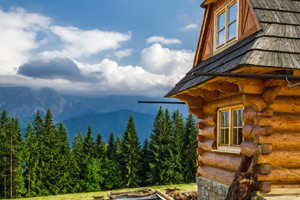- This classic alpine summit is the tallest peak in the Tetons at 13,770 feet.
- Located at the head of Garnet Canyon in Grand Teton National Park.
- Although usually climbed in two days, light-and-fast climbers complete ascents and descents in just one day.
Overview
The tallest mountain in the Teton Range, the Grand Teton’s pyramid-shape is recognizable for miles around and can be found in photographs everywhere. Standing 13,770 feet tall, the Grand is the second tallest mountain in Wyoming (behind the 13,809 foot-tall Gannett Peak in the Wind River Range) and one of North America’s classic peaks, attracting climber and ski mountaineers from all over.
Location
The Grand Teton is located in Grand Teton National Park. It is usually accessed by hiking up Garnet Canyon, although the west face can be approached from Alaska Basin.
Climbing
Climbing the Grand Teton should be a must-do on every climber’s list, and with well over 100 established routes, ranging from the standard 5.4 Owen-Spalding route (a mellow route despite its high degree of exposure) to more difficult mixed alpine climbs, it’s well-worth climbing it more than once. Although there are easy routes up the Grand, novice climbers should team up with experienced mountaineers or take advantage of one of the local guide services.
Climbing the Grand Teton can be done in one or two days (most groups take two), with the option of spending a staging night at the Platforms, in Lupine Meadows or at the Lower Saddle.
The first ascent of the Grand Teton is a point of contention, with two different groups (one led by Nathaniel Langford in 1872 and one by William Owen in 1898) each claiming the summit.
Ski Mountaineering
Although winter ascents of the Grand Teton are less common than summer ones (thousands attempt to summit the Grand each summer), ski mountaineers summit and ski off of the Grand each year, with the majority attempting it in more-stable spring conditions.
The first ski descent of the Grand was done in 1971 by Bill Briggs.
Hiking
If ropes, exposure and climbing aren’t in your bag of tricks, hiking up to the Upper Saddle and spending a night in the Lupine Meadows is still a great way to experience the Grand Teton. Viewing it from close-up only makes the Grand even grander, and a sunny afternoon spent relaxing in Lupine Meadows and hiking up to the saddles between the three Tetons is never a wasted one.
The hike up Disappointment Peak past Amphitheater and Surprise Lakes is another great way to experience the Grand Teton, as the less-technical summit of Disappointment provides an unobstructed view of the Grand’s east face.
Camping
If you do decide to spend the night in Grand Teton National Park on your way to or from the Grand Teton, you’ll need to get a backcountry permit from the park rangers, as well as bear-proof food containers. In peak months be sure to reserve your campsite in advance as there are a limited number of spaces.
Seasons
Most ascents of the Grand Teton are done between June and September, when most snow and ice has melted off and days are longer and warmer. Be aware that afternoon thunderstorms can be common in the Tetons during the summer months.
Late fall and early winter ascents of the Grand are rare, as the variable weather and thin and unstable snowpack increases the danger.







